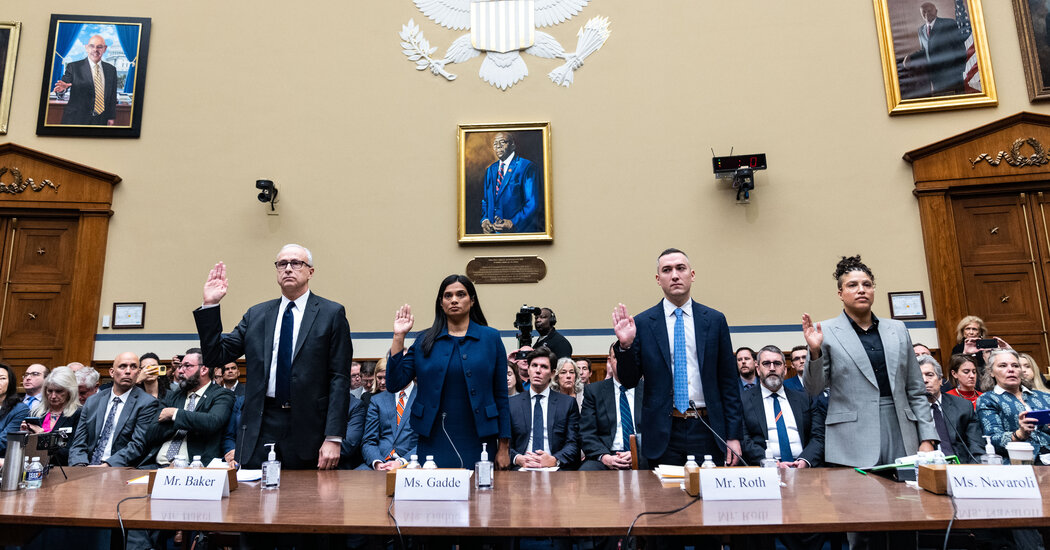Three-Quarters of Teenagers Have Seen Online Pornography by Age 17
The internet has transformed pornography, making it much easier to view and share than in the days of Playboy magazine and late-night cable television.
For teenagers, that’s created a deluge of sexually explicit photos and videos that has invaded their everyday lives, according to a report released on Tuesday.
Three-quarters of teenagers have viewed pornography online by the age of 17, with the average age of first exposure at age 12, according to the report by Common Sense Media, a nonprofit child advocacy group. Teenagers are seeing the photos and videos on their smartphones, on their school devices and across social media, pornography sites and streaming sites, it said.
The report underlined how ubiquitous pornography has become, with 41 percent of teenagers saying they had seen images of nudity or sexual acts online during the school day. Much of the exposure was by accident, with 58 percent saying they did not seek out the sexually explicit videos and photos, but had come across them while surfing the web, on social media or through search engines or clicking ads.
Teenagers have increasingly grappled with the role of technology on their mental health and well-being. In recent years, lawmakers have criticized social media platforms like Instagram for exacerbating eating disorders and scrutinized how the sites have been used to sell illegal substances such as fentanyl-laced drugs to adolescents.
The effect of online pornography on teenagers has been less examined, but parents and politicians have been locked in fierce debates over tech safety and whether discussions around pornography should take place in schools or at home. Last fall, sex education courses in Idaho were falsely portrayed in posts and an article as promoting pornography. Tweets linking to the false report provoked outrage online and were mentioned on Fox News. In Louisiana, a new law will require age verification for pornography sites.
“We can’t sweep this topic under the rug just because it’s uncomfortable to talk about,” said Jim Steyer, the founder and chief executive of Common Sense Media, who plans to present the report this week to officials at the White House and at federal agencies. “Pornography is a huge part of the lives of children who have digital access like never before, and we need to have a national conversation about it.”
Part of the issue is that online pornography is a highly lucrative industry, giving it a firm foothold. While there is little data on the size of the online pornography industry, one estimate from Alec Helmy, the founder of the trade publication XBIZ, which surveys payment processors, puts revenues for adult influencers and platforms at at least $15 billion in 2022. He estimated revenues from internet pornography in 2012 were $5 billion.
In recent years, online pornography has evolved into a business in which thousands of people have their own streaming, texting and photo channels that are promoted on sites like Instagram and hosted on platforms like OnlyFans and PornHub, Mr. Helmy said.
Common Sense’s report was based on a survey in September of 1,358 Americans ages 13 to 17. More than half said they had viewed pornography of violent acts such as rape, choking or someone in pain. A majority said the pornography portrayed stereotypes of Black, Latino and Asian people. More than half said they felt guilty or ashamed after watching porn.
At the same time, 45 percent said the pornography provided helpful information about sex. L.G.B.T.Q. teenagers, in particular, said it helped them discover more about their sexuality.
“We have to be careful about saying all porn is good or bad,” said Emily Rothman, a professor of community health sciences at Boston University. “There is nuance here.”
Schools, parents and political leaders have been at odds on how to handle the topic. David Miyashiro, the superintendent of the Cajon Valley Union School District in the San Diego area, said he had held tech and safety workshops and discussions for parents but had not directly addressed pornography in any of those sessions. The Middle Eastern refugee community and conservative Christians have expressed discomfort with the district’s conducting any sex education, he said.
The devices that students are issued to take home have filtering software, he said, that runs through district servers to block access to pornography sites and to alert school officials of searches for explicit and harmful content.
“Sexual health and sex ed are areas that are very family specific,” Mr. Miyashiro said. “A wide-sweeping policy or stance will sometimes isolate people and can create enemies or friends.”
Shelly Viramontez, the superintendent of the Campbell Union School District near San Jose, Calif., said problems also arise with personal phones that children bring to school. Her district has conducted disciplinary action around sexualized behavior that she and counselors believe is linked to more exposure to pornography.
“This generation of parents are dealing with things that no other generation has had to deal with — the amount of access to information in the hands of kids,” Dr. Viramontez said.
In the Common Sense survey, teenagers said much of the content they saw was disturbing. Only one in three said the pornography included someone asking for consent before engaging in sexual activity. Fewer than half said they discussed pornography with a trusted adult. Of those who did, the conversation “encouraged them to think about ways to explore sex or sexuality other than porn,” according to the report.
Teenagers who intentionally sought pornography said their top sources were sites like PornHub and YouPorn. Instagram, TikTok, Snapchat, Reddit and other social media sites ranked second as sources for pornography.
Instagram, Snap and TikTok ban sexually explicit material. But the sites have been used for promotions that link to pornography sites. They also bar individuals from directing users to pornography on other platforms.
In December, YouTube banned PornHub’s channel for repeatedly violating its policy that forbids links to websites that violate YouTube’s community guidelines, such as pornography. Meta, which owns Facebook and Instagram, has a similar ban on outside links and said its algorithms were designed to limit the spread of sexually explicit content.
A YouTube spokesperson said its policy was to “strictly prohibit the posting of explicit content, such as pornography, that is intended to be sexually gratifying on our platform.” Meta said Facebook and Instagram had controls that automatically made it harder for teenagers to search for and find sexually suggestive content.
TikTok said that it didn’t allow sexually suggestive content in its “For You” feeds and that it blocked inappropriate searches and hashtags. “We continue to invest in safe and age-appropriate experiences for teens through robust policies, parental controls and technology to counter this content at scale,” a TikTok spokesperson said in a statement.
Reddit declined to comment on the report, but said it did not have a strict ban on mature content. The app is geared more toward older users and has a suggested minimum age rating of 17. Users under the age of 17 who enter group discussions with mature content are barred from the app, according to the company’s policy.
Snap said it banned accounts that promoted sexually explicit content and was “constantly working to improve our efforts to combat it.” Content from creators and publishers is moderated before a large audience can view it, which reduces the spread and discovery of content that violates our policies, Snap said.
PornHub did not respond to a request for comment.
Teachers and parents said they couldn’t rely on the tech companies to block the content.
“You can’t blame the technology and not have these conversations with children,” Dr. Viramontez said.


